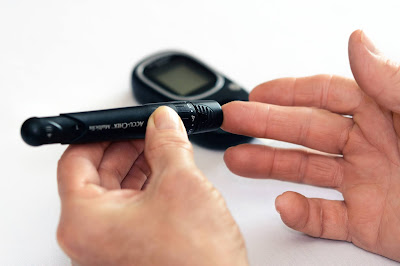New approaches in managing diabetes through two steps only - Diabetes and life style modification
Diabetics is a metabolic disorder which affects 2.8% of population in 2000 and expected to increase 4.4% in 2030. Numeric figure of this percentage is 366 million that’s means in 2030, 366 million will affected from diabetics mellitus.
What is diabetes?
Diabetic is metabolic disorder which is polygenic in nature
alike hypertension and coronary heart disease. Estimated 95% of diabetics’
cases are polygenic in nature which means an inherited disorder which are the
resultant of combined actions of more than one genes.
Whereas genetic mutation in one gene referred to as monogenic
diabetes and accounts for 1-5% of diabetes cases.
Most of the young age diabetes are monogenic diabetes. In
this form beta cells of pancreas are unable to produce insulin, insulin that is
responsible for the maintaining blood glucose level. Altering in blood glucose
level lead to end organ damage
Types of diabetes?
Type of diabetes depend on its age whereas severity of
disease depend upon with level of blood glucose.
Diabetes can be categorized on its age of onset in type 1,
type 2, and type 3, neonatal and gestational diabetes.
Type 1 diabetes
It is also known as young age diabetes because it onset is
before 30 years or in younger peoples. It is genetically transferred either polygenically
or monogenically from parents.
Patients with type 1 diabetes are insulin dependent, by
maintaining their blood glucose through insulin shot so it is also known as
insulin dependent diabetes.
Type 2 diabetes
It is late onset diabetes symptoms pf diabetes occur in late
age i.e. above 30 years of age.
Type 2 diabetic patients are non- Insulin dependent in this
type alteration in blood glucose levels are secondary to insulin resistance or
insulin deficiency
Type 2 diabetic patients are at more risk than type 1, some
of these risk factors are modifiable others are non-modifiable that cannot be
modify.
Type 3 diabetes:
Alteration in glucose metabolism in type 3 diabetes are
followed by cognitive impairment and
oxidative stress – these symptoms are also
characterized in Alzheimer
disease so it is not wrong to say that possible form of Alzheimer disease is
type 3 diabetes mellitus.
Recent studies concluded several other mechanistic link
between diabetic type 3 and AD that are metabolite changes and lipids,
carbohydrates, protein and brain dysfunction.
Neonatal diabetes
As the name indicated, this type of diabetes occur in
neonatal babies that means fix six months of life.
Its prevalence ratio is one in 100000 – 500000 birth. It is
monogenic diabetes and misdiagnosed as type 1 diabetes.
Gestational diabetes:
Onset of gestational diabetes in pregnancy majorly in late
pregnancy or in last of second or starting of third trimester. It is associated
with carbohydrate intolerance.
Reasons of gestational diabetes are:
- Mother age 25 or older
- Overweight mother, having BMI 30 or higher
- Previously mother have polycystic ovary
- Mother taking antipsychotic pills, beta blockers for hypertension, glucocorticoid for asthma and other autoimmune disease.
- Mother past disease, facing with diseases that precipitate out diabetes in mother as like glucose intolerance.

Comments
Post a Comment